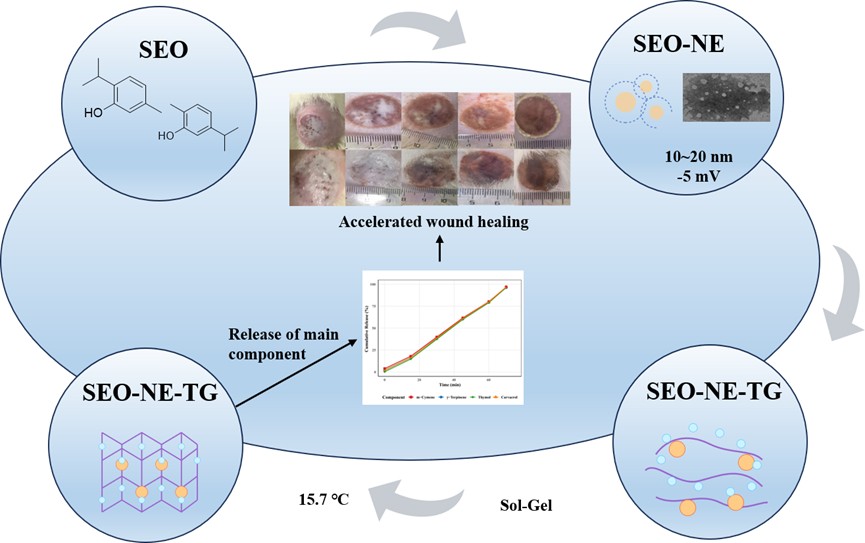
Schizonepeta annua, a traditional Chinese medicinal plant, is gaining new attention for its healing potential. Its essential oil, rich in bioactive compounds like thymol and carvacrol, has long been valued as both a commercially significant spice and a herbal remedy, known for properties such as warming the body, dispelling cold, and relieving pain.
Yet despite its historical use in medicine, the oil's application in wound healing has remained largely untapped—until now. Chronic wound care is a pressing global health challenge, affecting over 40 million people annually and costing more than $25 billion in medical expenses each year in developed countries alone. Bacterial infections, compounded by the growing threat of antibiotic resistance, have underscored the urgent need for new antimicrobial treatments. While natural essential oils offer promise with their antibacterial, antioxidant, and anti-inflammatory effects, their clinical use has been hindered by drawbacks like high volatility and poor stability.
To bridge this gap, a research team led by Prof. Haji Akber Aisa from the Xinjiang Technical Institute of Physics and Chemistry of the Chinese Academy of Sciences, has developed a novel solution: a thermosensitive nano-emulsion gel wound dressing infused with Schizonepeta annua essential oil.
Through systematic refinement, the researchers created a stable oil-in-water nano-emulsion with uniformly sized particles. The resulting gel boasts ideal properties for wound application: it solidifies in response to temperature, exhibits excellent shear-thinning behavior, and releases its active ingredients through an erosion-controlled mechanism—ensuring sustained effectiveness.
In vitro antibacterial experiments demonstrated that the gel effectively combats key wound pathogens, including methicillin-resistant Staphylococcus aureus (MRSA), while showing good biocompatibility with keratinocytes at antibacterial-effective concentrations. In animal studies using a rat burn model, the gel treatment group significantly promoted epidermal regeneration, improved collagen tissue organization, and effectively regulated inflammatory marker levels.
This study merges natural antibacterial components with biocompatible materials, offering a promising platform for advanced wound management and providing a natural alternative to traditional antibacterial dressings with healing-promoting capabilities.
The findings, published in the journal Industrial Crops and Products, were supported by the National Key R&D Program of China and Xinjiang Tianshan Talents Program.
This research highlights how traditional herbal knowledge, when combined with modern materials science, can drive solutions to critical global health challenges.

Schematic diagram of Schizonepeta annua essential oil nano-gel preparation and wound healing study. (Image by Prof. Haji Akber Aisa's lab)

86-10-68597521 (day)
86-10-68597289 (night)

52 Sanlihe Rd., Xicheng District,
Beijing, China (100864)

